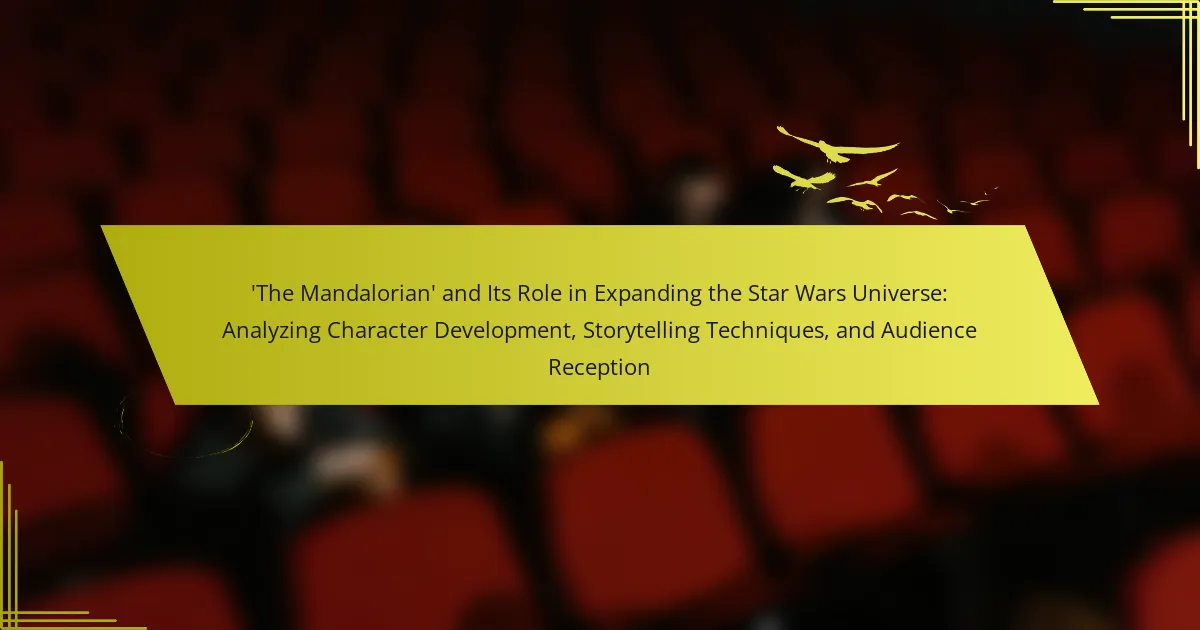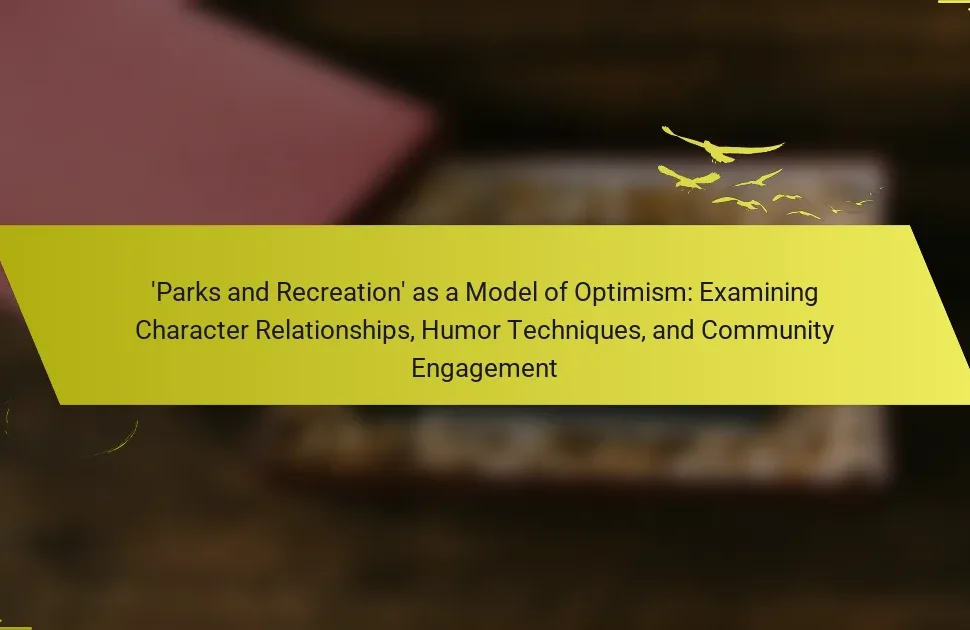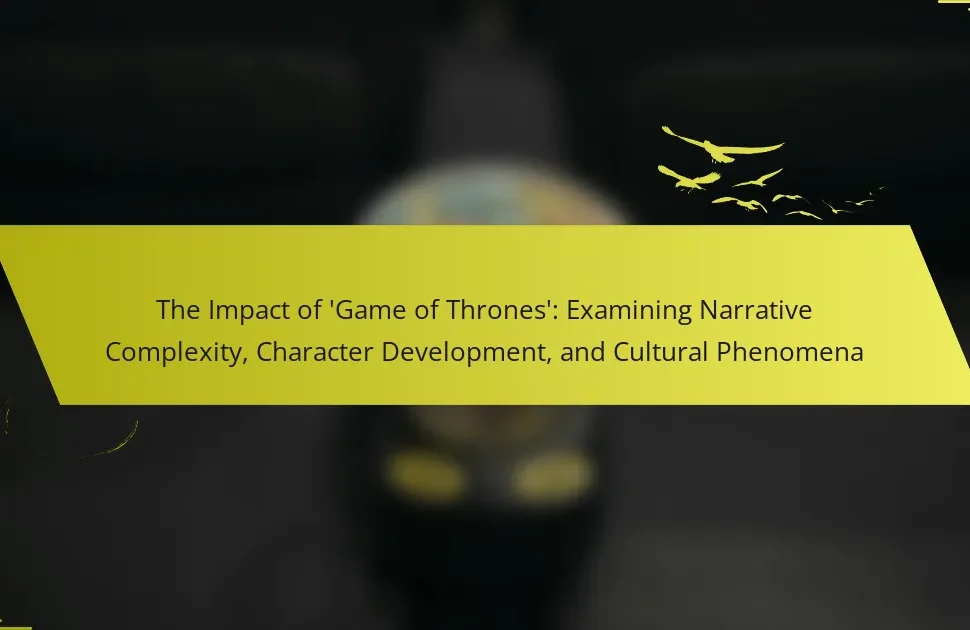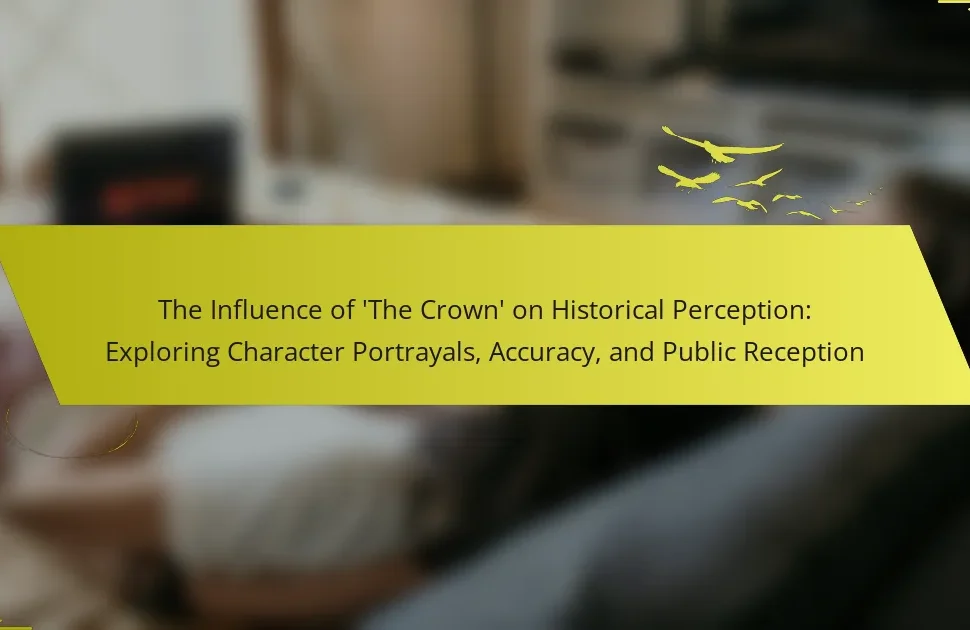‘The Mandalorian’ is a live-action television series set in the Star Wars Universe that premiered on Disney+ in November 2019. The series follows the journey of the protagonist, Din Djarin, a lone bounty hunter navigating the complexities of morality, honor, and loyalty in the outer reaches of the galaxy. Key themes include character development, particularly through Din’s evolving relationship with Grogu, and the use of episodic storytelling techniques that enhance audience engagement. The show has received critical acclaim for its storytelling and production quality, contributing to a revitalization of interest in the Star Wars franchise and resonating with both long-time fans and newcomers.
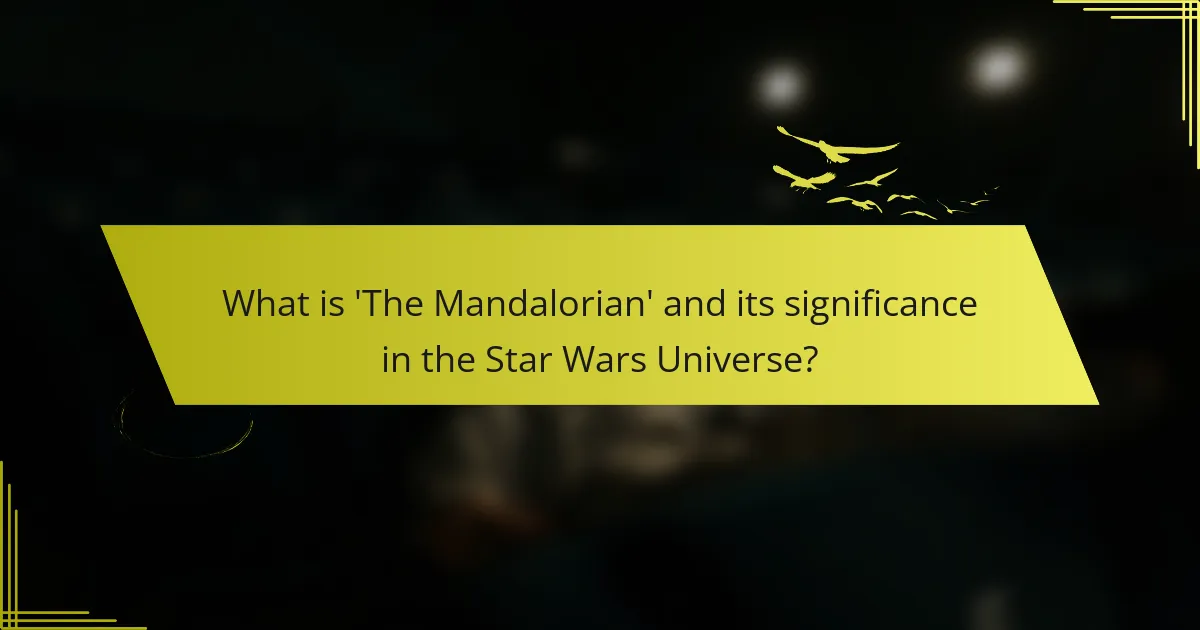
What is ‘The Mandalorian’ and its significance in the Star Wars Universe?
‘The Mandalorian’ is a live-action television series set in the Star Wars Universe. It premiered on Disney+ in November 2019. The series follows the journey of a lone bounty hunter, Din Djarin, in the outer reaches of the galaxy. Its significance lies in its exploration of themes like honor, loyalty, and the complexities of morality. The show expands the lore of the Star Wars Universe by introducing new characters and settings. It also connects to existing narratives through references to iconic elements of the franchise. The series has received critical acclaim for its storytelling and production quality. It has played a vital role in revitalizing interest in the Star Wars franchise, attracting both new and veteran fans.
How does ‘The Mandalorian’ fit into the overall Star Wars timeline?
‘The Mandalorian’ is set approximately five years after the events of ‘Return of the Jedi.’ This places it in the timeline during the New Republic era. The series explores the aftermath of the fall of the Empire. It showcases the struggles of various factions in the galaxy. Key characters from previous Star Wars media make appearances. The show also introduces new characters that expand the lore. The timeline positioning allows for rich storytelling and character development. This context enhances the overall Star Wars narrative.
What are the key events leading up to ‘The Mandalorian’?
The key events leading up to ‘The Mandalorian’ include the fall of the Galactic Empire and the rise of the New Republic. The original trilogy culminated in the destruction of the second Death Star in ‘Return of the Jedi.’ This event marked the end of Emperor Palpatine’s rule. Following this, the galaxy experienced a power vacuum. Various factions emerged, including remnants of the Empire. The timeline also includes the emergence of the First Order, which becomes a significant threat. ‘The Mandalorian’ is set five years after ‘Return of the Jedi.’ The series explores the aftermath of the Empire’s fall and the struggles of individuals in this chaotic environment. These events provide the backdrop for the show’s narrative and character development.
How does ‘The Mandalorian’ connect to existing Star Wars lore?
The Mandalorian connects to existing Star Wars lore through its characters, settings, and themes. The series features iconic elements like Mandalorian culture and the Force. Characters such as Ahsoka Tano and Boba Fett are directly linked to previous Star Wars narratives. The show explores the aftermath of the Empire’s fall, a critical period in Star Wars history. It also introduces new lore, such as the Darksaber, which has historical significance in the Star Wars universe. The presence of the Child, also known as Grogu, connects to the lore surrounding Jedi and their training. Overall, The Mandalorian expands the Star Wars universe while remaining rooted in established mythology.
What themes are explored in ‘The Mandalorian’?
‘The Mandalorian’ explores themes of identity, belonging, and the moral complexities of duty. The series delves into the journey of the titular character as he navigates his role as a bounty hunter. It examines the conflict between personal values and the demands of his profession. The show also highlights themes of family and protection, particularly through the bond between the Mandalorian and Grogu. The narrative emphasizes the importance of community and loyalty in a fragmented galaxy. Additionally, it addresses the consequences of choices made in the pursuit of survival. These themes resonate with audiences, enriching the storytelling experience.
How does the show address concepts of identity and belonging?
The show addresses concepts of identity and belonging through the character of Din Djarin. Din’s journey reflects a struggle between his Mandalorian heritage and personal choices. He grapples with the meaning of being a Mandalorian while forming bonds with others, especially Grogu. The relationship between Din and Grogu emphasizes parental connections and found family. This dynamic illustrates how identity can evolve through relationships. Additionally, the show explores belonging within different cultures in the Star Wars universe. Characters often seek acceptance in diverse communities, highlighting the universal quest for identity. Overall, “The Mandalorian” intertwines personal growth with themes of belonging and cultural identity.
What role does honor play in the narrative of ‘The Mandalorian’?
Honor plays a central role in the narrative of ‘The Mandalorian.’ The Mandalorian code emphasizes honor as a guiding principle for its characters. This code influences decisions and actions throughout the series. The protagonist, Din Djarin, embodies this honor by adhering to the Mandalorian creed. He demonstrates loyalty, integrity, and a commitment to protect those who cannot protect themselves. Honor shapes his relationships, particularly with Grogu, whom he views as a responsibility. The series explores the tension between personal honor and survival in a lawless galaxy. This conflict drives character development and enriches the storytelling. Ultimately, honor serves as a lens through which the audience understands the Mandalorian’s motivations and choices.
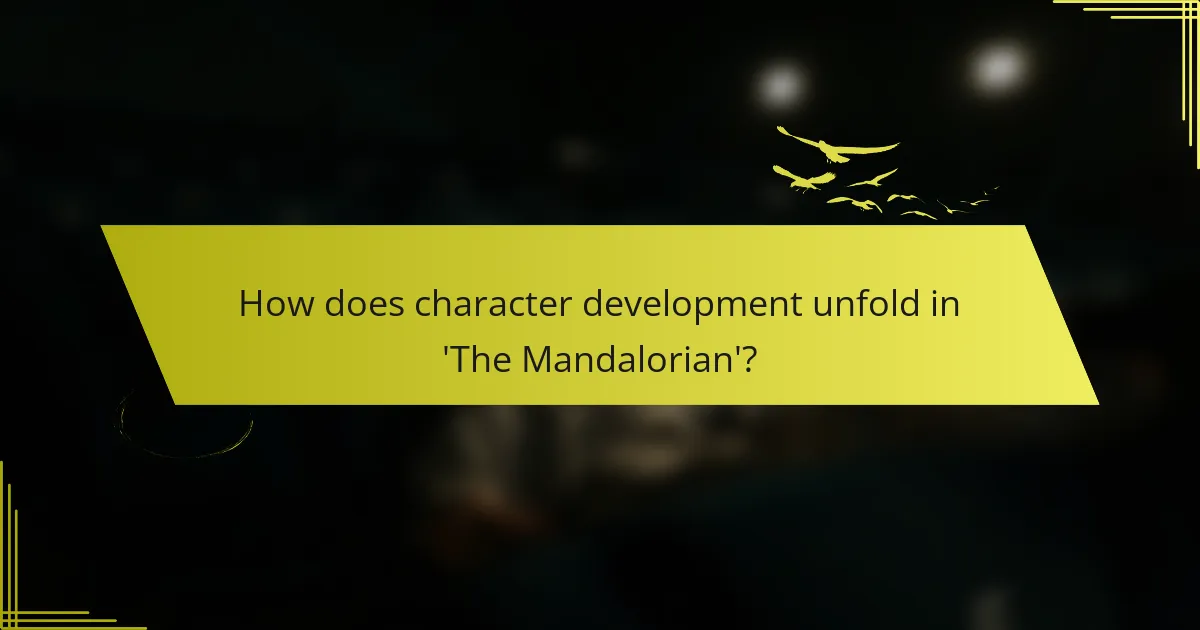
How does character development unfold in ‘The Mandalorian’?
Character development in ‘The Mandalorian’ unfolds through the protagonist’s evolving relationships and moral dilemmas. The Mandalorian, known as Din Djarin, begins as a lone bounty hunter with a strict code. His initial interactions with characters like the Child (Grogu) challenge his beliefs. As he protects Grogu, he shifts from a self-serving warrior to a protective figure. This transformation is evident in his choices, reflecting themes of loyalty and sacrifice. The series uses episodic storytelling to showcase these changes gradually. Each episode presents new challenges that force Din to confront his past and values. The character’s growth is marked by key moments, such as his decision to defy orders for Grogu’s safety. Overall, the character development is intricately tied to the narrative arc and emotional stakes throughout the series.
What are the main character arcs presented in the series?
The main character arcs presented in “The Mandalorian” include the evolution of Din Djarin, Grogu, and other key figures. Din Djarin transforms from a solitary bounty hunter to a protective father figure. His journey emphasizes themes of honor, loyalty, and personal growth. Grogu’s arc showcases his struggle between his innate abilities and the need for protection. Other characters, like Cara Dune and Greef Karga, also experience significant growth and shifts in allegiance. These arcs contribute to the overall narrative and enrich the Star Wars universe.
How does Din Djarin evolve throughout the seasons?
Din Djarin evolves significantly throughout the seasons of “The Mandalorian.” Initially, he is portrayed as a lone bounty hunter, strictly adhering to the Mandalorian code. His character begins to show emotional depth when he encounters Grogu, forming a protective bond with him. This relationship challenges Din’s adherence to his code, leading him to prioritize Grogu’s safety over his own missions.
As the seasons progress, Din’s motivations shift from self-interest to a sense of responsibility and loyalty. He begins to embrace the role of a father figure, showcasing vulnerability and compassion. This transformation is evident in his willingness to defy powerful adversaries to protect Grogu.
By the end of the latest season, Din Djarin has transitioned from a solitary figure to a leader within the Mandalorian community. He takes on the mantle of leadership, demonstrating growth in his character. His evolution reflects themes of family, sacrifice, and identity, enriching the narrative of the series.
What impact does Grogu have on Din Djarin’s character development?
Grogu significantly influences Din Djarin’s character development by fostering his emotional growth. Initially, Din is a solitary bounty hunter focused on his mission. Grogu’s presence introduces themes of compassion and responsibility. As Din protects Grogu, he evolves from a hardened warrior to a caring guardian. This transformation is evident in his willingness to defy the Mandalorian code for Grogu’s sake. The bond they share deepens Din’s understanding of love and sacrifice. Ultimately, Grogu challenges Din to embrace vulnerability, shaping his identity beyond a mere bounty hunter. This character arc is a central element of “The Mandalorian,” enhancing the narrative’s emotional depth.
How are secondary characters developed in ‘The Mandalorian’?
Secondary characters in ‘The Mandalorian’ are developed through backstory, relationships, and arcs. Each character is introduced with distinct motivations and traits. For example, Cara Dune is portrayed as a skilled warrior with a complex past. Her interactions with the Mandalorian reveal her loyalty and strength. Additionally, characters like Greef Karga evolve through their experiences and choices. They transition from antagonistic roles to allies, showcasing growth. The series utilizes episodic storytelling to explore these characters deeply. This approach allows for gradual development and audience investment. Overall, secondary characters are integral to the narrative, enhancing the story’s depth and emotional resonance.
What are the notable traits of characters like Cara Dune and Greef Karga?
Cara Dune is known for her strength, combat skills, and loyalty. She is a former shock trooper with a strong moral compass. Greef Karga, on the other hand, exhibits charisma, resourcefulness, and a pragmatic approach to leadership. He initially operates as a bounty hunter but evolves into a more complex character. Both characters showcase resilience in the face of adversity. Their interactions highlight themes of trust and redemption within the series. Cara Dune’s background adds depth to her character, while Greef Karga’s transformation illustrates character development. These traits contribute significantly to the narrative of “The Mandalorian.”
How do these characters contribute to the overall story?
The characters in ‘The Mandalorian’ significantly advance the overall story through their unique arcs and relationships. The Mandalorian, as the central character, embodies themes of honor and redemption. His journey from a lone bounty hunter to a protector showcases personal growth. Grogu, or “The Child,” adds emotional depth and serves as a catalyst for the Mandalorian’s transformation. Other characters, such as Cara Dune and Greef Karga, introduce subplots that enrich the narrative. Their interactions highlight the complexities of loyalty and morality in a lawless galaxy. Villains like Moff Gideon create conflict that drives the story forward. Each character’s development is intricately tied to the broader themes of family and belonging. Together, these characters weave a rich tapestry that expands the Star Wars universe while maintaining a compelling narrative.
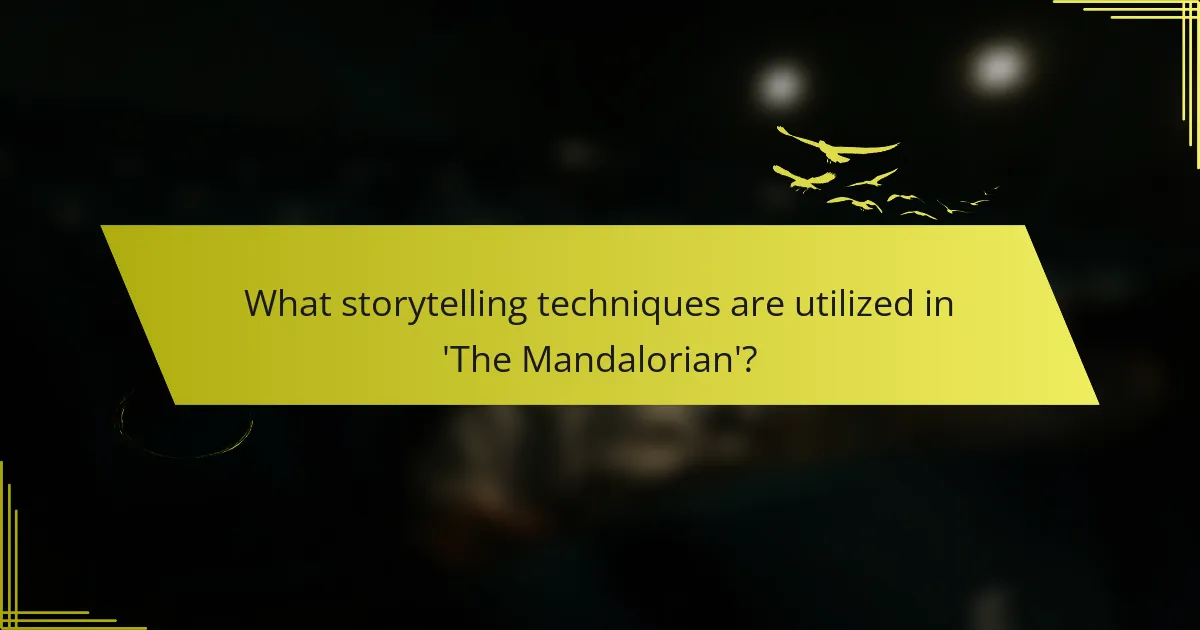
What storytelling techniques are utilized in ‘The Mandalorian’?
‘The Mandalorian’ utilizes several storytelling techniques including episodic structure, character-driven narratives, and visual storytelling. The episodic structure allows for self-contained stories, making each episode accessible. Character-driven narratives focus on the development of the protagonist, Din Djarin, and his relationships. Visual storytelling is emphasized through cinematography and production design, creating an immersive experience. Additionally, the series employs the use of cliffhangers to maintain audience engagement. These techniques contribute to its unique appeal within the Star Wars universe.
How does the episodic structure influence the narrative?
The episodic structure significantly influences the narrative by allowing self-contained stories within a larger arc. Each episode presents a distinct conflict and resolution, enabling character exploration and development. This format allows for diverse themes and tones, appealing to a wide audience. Additionally, it creates anticipation for each installment, enhancing viewer engagement. The episodic nature fosters a sense of progression while maintaining focus on individual character journeys. This approach has been effective in ‘The Mandalorian,’ as it integrates various storytelling techniques while expanding the Star Wars universe.
What are the benefits of a week-to-week release format?
A week-to-week release format generates sustained audience engagement. This format allows viewers to discuss and analyze each episode extensively. It creates anticipation for future episodes, enhancing viewer investment. Additionally, it prevents binge-watching fatigue, keeping interest alive over time. The format also encourages community interaction on social media platforms. Studies show that episodic releases can increase viewer retention rates. For example, shows like “The Mandalorian” benefited from this strategy, maintaining high viewer interest throughout its season.
How does this structure affect audience engagement?
The structure of “The Mandalorian” significantly enhances audience engagement. Its episodic format allows for concise storytelling. Each episode presents a self-contained narrative while contributing to an overarching plot. This keeps viewers invested in both individual stories and the larger storyline. The use of cliffhangers at the end of episodes encourages viewers to return for the next installment. Additionally, character development is gradual, allowing audiences to form emotional connections. The blend of familiar Star Wars elements with new characters attracts both loyal fans and newcomers. Engaging visuals and sound design further immerse the audience in the narrative. Overall, this structured approach fosters a strong viewer commitment and enthusiasm.
What visual and stylistic choices define ‘The Mandalorian’?
‘The Mandalorian’ is defined by its cinematic visual style and unique storytelling techniques. The series employs a blend of practical effects and state-of-the-art CGI. This combination creates a realistic and immersive environment. The use of wide shots highlights the vastness of the Star Wars universe. Color palettes often feature earthy tones, enhancing the gritty aesthetic. The series also utilizes minimalistic sound design, allowing for atmospheric tension. Furthermore, the episodic structure allows for character-driven narratives. Each episode focuses on personal growth and moral dilemmas. These choices contribute to the show’s distinct identity within the Star Wars franchise.
How does the use of practical effects enhance the viewing experience?
The use of practical effects enhances the viewing experience by providing tangible realism. Practical effects create a physical presence that digital effects often lack. This authenticity fosters a deeper emotional connection with the audience. In ‘The Mandalorian’, practical effects contribute to immersive world-building. The series utilizes miniatures, animatronics, and real sets extensively. These methods evoke nostalgia for classic Star Wars films. Practical effects also allow for more dynamic interactions between characters and their environments. Studies show that audiences respond positively to the realism of practical effects, leading to higher engagement.
What role does cinematography play in storytelling?
Cinematography plays a crucial role in storytelling by visually conveying emotions and themes. It shapes the audience’s perception of characters and events. Techniques such as framing, lighting, and camera movement influence the narrative’s tone. For example, close-ups can highlight a character’s emotional state. Wide shots establish context and relationships between characters. The use of color can evoke specific feelings or symbolize themes. In ‘The Mandalorian,’ cinematography enhances the immersive experience of the Star Wars universe. By employing cinematic techniques, the series deepens the audience’s connection to the story and its characters.
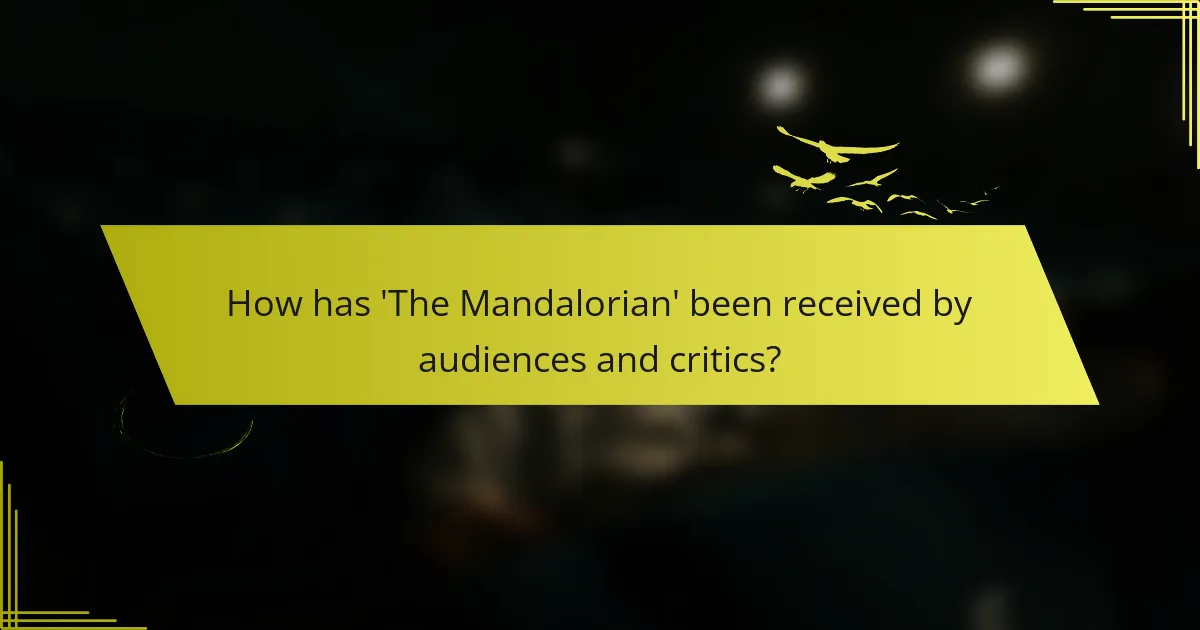
How has ‘The Mandalorian’ been received by audiences and critics?
‘The Mandalorian’ has been positively received by both audiences and critics. It holds a high rating on Rotten Tomatoes, with an average audience score of over 90%. Critics have praised its storytelling, character development, and visual effects. The series has won multiple awards, including several Emmy Awards. Fans have particularly appreciated the return of familiar Star Wars elements and the introduction of new characters. The character of Grogu, also known as Baby Yoda, became a cultural phenomenon, further enhancing its popularity. Overall, ‘The Mandalorian’ has successfully expanded the Star Wars universe, resonating with both long-time fans and newcomers.
What are the critical responses to ‘The Mandalorian’?
Critical responses to ‘The Mandalorian’ have been largely positive. Critics praise its storytelling and character development. The series has been noted for its cinematic quality. Many highlight the innovative approach to the Star Wars universe. The character of Grogu has received particular acclaim. Critics appreciate the blend of nostalgia and new narratives. Some reviewers point out pacing issues in certain episodes. Overall, the show has successfully engaged both fans and newcomers to the franchise.
Which aspects of the show have been most praised by critics?
Critics have most praised ‘The Mandalorian’ for its character development and storytelling techniques. The show’s ability to blend familiar Star Wars elements with new narratives has received acclaim. Critics highlight the depth of the characters, particularly the journey of the titular Mandalorian. The introduction of Grogu has been noted for adding emotional weight and intrigue. The series’ production quality, including visual effects and cinematography, has also garnered positive reviews. Critics appreciate the show’s pacing and how it maintains suspense throughout episodes. Overall, ‘The Mandalorian’ is recognized for its innovative approach to expanding the Star Wars universe.
What criticisms have been directed at ‘The Mandalorian’?
Criticisms directed at ‘The Mandalorian’ include concerns about its pacing and character development. Some viewers feel that certain episodes lack depth and meaningful progression. Critics have pointed out that the show sometimes relies heavily on nostalgia rather than original storytelling. Additionally, there are complaints about the treatment of female characters in the series. Some fans argue that these characters are not given enough agency. The reliance on CGI and special effects has also drawn mixed reviews. Some believe it detracts from the overall narrative quality. These criticisms highlight ongoing debates about the show’s impact within the Star Wars universe.
How has audience reception influenced the future of the series?
Audience reception has significantly influenced the future of ‘The Mandalorian.’ Positive reviews and high viewer ratings led to the series being renewed for multiple seasons. Audience feedback on character development has prompted writers to explore deeper story arcs. For example, the popularity of Grogu resulted in more focus on his backstory. Additionally, fan reactions to storytelling techniques have encouraged the creators to maintain a blend of nostalgia and innovation. Social media discussions have shaped promotional strategies and content direction. Overall, audience engagement has been a key factor in shaping the series’ trajectory.
What trends can be observed in viewer ratings and feedback?
Viewer ratings for “The Mandalorian” have shown a consistent upward trend since its debut. The series received an 89% audience score on Rotten Tomatoes, indicating strong viewer approval. Feedback highlights the show’s character development and storytelling techniques as key strengths. Many viewers appreciate the blend of nostalgia and new elements in the Star Wars universe. Ratings often spike following major plot reveals or character introductions. Social media engagement also reflects positive sentiment, with fans actively discussing episodes. Critiques occasionally focus on pacing, but overall reception remains favorable. Ratings and feedback suggest “The Mandalorian” successfully resonates with both new and long-time Star Wars fans.
How has fan engagement shaped the direction of the show?
Fan engagement has significantly shaped the direction of “The Mandalorian.” Viewer feedback has influenced story arcs and character development. Social media platforms allow fans to express opinions and theories. This interaction has prompted creators to adapt storylines based on audience preferences. For example, the popularity of certain characters led to expanded roles in subsequent episodes. Additionally, fan theories often spark discussions that guide plot twists. The show’s ability to listen to its audience creates a more dynamic viewing experience. Ultimately, fan engagement fosters a collaborative relationship between creators and viewers, enhancing the show’s overall appeal.
What lessons can be learned from ‘The Mandalorian’ for future storytelling?
‘The Mandalorian’ teaches several important lessons for future storytelling. First, it emphasizes character development through relatable arcs. The protagonist, Din Djarin, evolves significantly, showcasing growth and complexity. Second, it highlights the importance of world-building. The series effectively expands the Star Wars universe with rich lore and diverse settings. Third, it demonstrates the power of episodic storytelling. Each episode presents a self-contained narrative while contributing to the larger story. Fourth, it utilizes visual storytelling effectively. The cinematography and production design enhance emotional engagement. Finally, it shows the value of balancing nostalgia with innovation. The series pays homage to classic elements while introducing fresh concepts. These lessons illustrate effective strategies for engaging modern audiences.
What best practices can be derived from its character development?
Best practices derived from character development in ‘The Mandalorian’ include creating multi-dimensional characters. Multi-dimensional characters allow for deeper audience engagement. Establishing clear motivations enhances character relatability. Characters should evolve over time to reflect growth and change. Consistent backstory adds depth and authenticity. Utilizing relationships to reveal character traits fosters emotional connections. Balancing strengths and weaknesses makes characters more realistic. Incorporating moral dilemmas creates tension and drives narrative. These practices contribute to a richer storytelling experience and resonate with audiences.
How can other series apply the storytelling techniques used in ‘The Mandalorian’?
Other series can apply the storytelling techniques used in ‘The Mandalorian’ by focusing on episodic narratives. This structure allows for self-contained stories within a larger arc. They can also emphasize character development through gradual growth and personal stakes. The use of visual storytelling enhances emotional impact and world-building.
Additionally, incorporating a strong mentor-mentee dynamic can deepen character relationships. Utilizing minimal dialogue while conveying emotions through visuals is another effective technique. Furthermore, integrating diverse cultural influences can enrich the narrative. Finally, maintaining a balance between action and quieter moments fosters viewer engagement.
‘The Mandalorian’ is a live-action television series set in the Star Wars Universe, focusing on the journey of bounty hunter Din Djarin. The article analyzes the show’s significance in expanding Star Wars lore, its placement in the timeline, and key events leading up to its narrative. It explores character development, particularly the evolution of Din Djarin and Grogu, as well as the themes of honor, identity, and belonging. Additionally, it examines storytelling techniques, audience reception, and the impact of fan engagement on the series’ direction, providing insights into best practices for character development and narrative structure in future storytelling.
